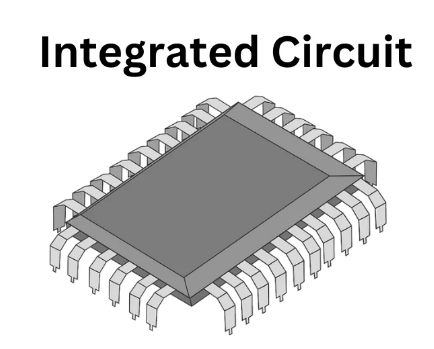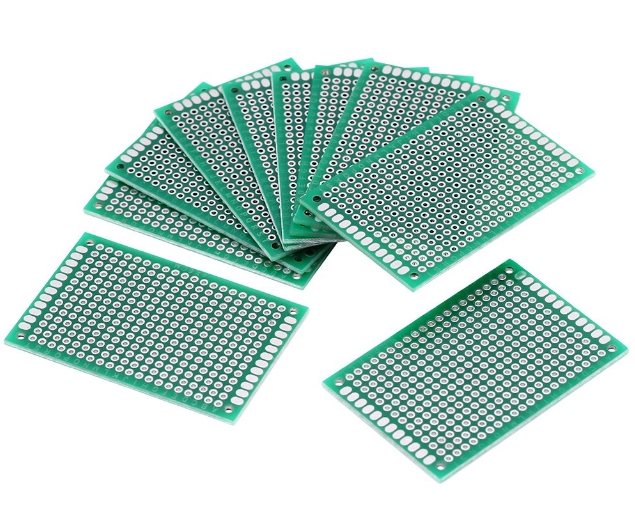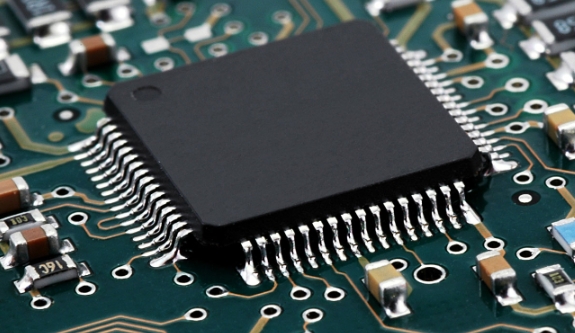Integrated Circuit: Different Classifications and Different Applications

Integrated Circuit (IC) is one of the core components of modern electronic technology and is widely used in various electronic devices. The invention of IC has greatly promoted the development of information technology, making electronic devices more compact, efficient and reliable. This article will introduce the definition, classification, working principle and application of IC in modern electronic technology in detail.

Definition of Integrated Circuit
Integrated Circuit (IC) is a circuit that integrates multiple electronic components (such as transistors, resistors, capacitors, etc.) on a small semiconductor substrate (usually silicon wafer). IC realizes electronic circuits with complex functions by integrating these components tightly together, greatly reducing the volume and weight of the circuit and improving the performance and reliability of the circuit.
Basic Principles of Power Supply
Semiconductor Materials
Transistor
- Bipolar Junction Transistor (BJT) :Includes NPN and PNP types, and controls the collector current through the base current.
- Field Effect Transistor (FET): includes MOSFET (Metal Oxide Semiconductor Field Effect Transistor) and JFET (Junction Field Effect Transistor), and controls the drain current through the gate voltage.
Resistors and Capacitors
How Integrated Circuits Work
The working principle of ICs (integrated circuits) is to achieve specific electronic functions through switching control and signal processing of electronic components such as transistors. The following is a detailed explanation of the working principle of ICs:
The switching function of transistors
- The core component in ICs is transistors, usually field effect transistors (FETs) or bipolar transistors (BJTs). These transistors can adjust the output signal by controlling the input signal to achieve functions such as amplification and switching.
Logic gate circuit
- Logic gates are circuits in ICs that implement basic logic operations, such as AND gates, OR gates, and NOT gates. These logic gates implement logic operations through the switching action of transistors. For example, an AND gate outputs a high level when all input signals are logically high, otherwise it outputs a low level.
Memory circuit
- Memory circuits are the parts of ICs used to store data, and common ones include random access memory (RAM) and read-only memory (ROM). These memories store data through capacitors or magnetic materials, and can read or write data when needed.
Amplifier circuits
- Amplifier circuits are used to increase the strength of signals, and common ones include operational amplifiers and power amplifiers. These amplifiers increase the amplitude of signals through the amplification of transistors.
Analog and digital signal processing
- ICs can process analog signals and digital signals. Analog signals are continuously changing signals, such as audio and video signals; digital signals are discrete binary signals, such as data in computers. The analog circuits and digital circuits in ICs are used to process these two types of signals respectively.
Input and output interface
- ICs communicate with other electronic devices through input and output interfaces. These interfaces can be level signals, serial or parallel data interfaces, etc., used to receive input signals and output processing results.
Power management
- IC usually requires a stable power supply, and the power management circuit is used to adjust and stabilize the power supply voltage to ensure the normal operation of the IC.
Package and pins
- IC is usually packaged in a plastic or ceramic shell, with external pins for connection with other electronic components. The package forms include DIP (dual in-line package), SOP (small outline package), etc.
Through the above explanation, it can be seen that the working principle of IC is to realize the processing and control of electrical signals through the switch control and signal processing of electronic components such as transistors, thereby realizing various electronic functions.
Classification and functions of IC

1、Classification by function
Analog IC:
Function:
- Operational amplifier (Op-Amps): used for signal amplification, filtering and operation.
- Audio amplifier: used to amplify audio signals.
- Analog-to-digital converter (ADC): converts analog signals to digital signals.
- Digital-to-analog converter (DAC): converts digital signals to analog signals.
Examples:
- Operational amplifier: LM324, LM358
- Audio amplifier: LM386, TDA2030
- Analog-to-digital converter: AD7656, MAX1232
- Digital-to-analog converter: DAC7678, TLV5618
Digital IC:
Definition: Digital IC processes discrete digital signals, such as binary data.
Function:
- Microprocessors: execute instruction sets and control the operation of computer systems.
- Microcontrollers: built-in processors, memory and input and output interfaces, used in embedded systems.
- Memory: used to store data and programs.
- Random Access Memory (RAM): such as DRAM, SRAM
- Read Only Memory (ROM): such as EEPROM, Flash
- Logic Gate Circuit: such as AND Gate, OR Gate, NOT Gate, etc., used to implement basic logic functions.
Examples:
- Microprocessor: Intel Core i7, AMD Ryzen 7
- Microcontroller: STM32F4, Arduino Uno
- Memory:
- RAM: DDR4, DDR5
- ROM: EEPROM, Flash
- Logic Gate Circuit: 74HC00, 74HC04
Mixed Signal IC:
Function:
- Signal Processors: used to handle complex signal processing tasks, such as speech recognition, image processing, etc.
- Communication IC: used for wireless communication, wired communication, etc.
- Power Management IC: used to control the stable output of power supply.
Examples:
- Signal processor: TI TMS320C6748
- Communication IC: Qualcomm Snapdragon Modem, Broadcom BCM4360
- Power management IC: TPS5420, LM2596
Application-specific IC (ASIC):
Function:
- Crypto chip: used for data encryption and decryption.
- Image processing chip: used for processing image data.
- Network processor: used for network data packet processing.
- Video encoder/decoder: used for encoding and decoding video signals.
Examples:
- Crypto chip: Cavium CN63XX
- Image processing chip: NVIDIA Tegra X1
- Network processor: Intel IXP425
- Video encoder/decoder: Broadcom BCM7401
General purpose IC:
Definition: General purpose IC can be widely used in many occasions and has standardized characteristics.
Function:
- Timer: used for timing and counting.
- Oscillator: used to generate a stable clock signal.
- Comparator: used to compare two voltage signals.
- Phase-locked loop (PLL): used to synchronize clock signals.
Examples:
- Timer: NE555
- Oscillator: LC oscillator
- Comparator: LM393
- Phase-locked loop: CD4046
2. Classification by application field
Computer system:
- Microprocessor: responsible for executing instruction sets and controlling the operation of computer systems.
- Memory: used to store data and programs.
- Input and output interface: used to connect peripherals such as keyboards, mice, monitors, etc.
Examples:
- Microprocessor: Intel Core i9, AMD Ryzen 9
- Memory: DDR4, DDR5
- Input and output interface: USB controller, PCIe controller
Communication equipment:
- Baseband processor: processes wireless communication signals and realizes data transmission.
- RF transceiver: responsible for sending and receiving wireless signals.
- Digital signal processor (DSP): processes voice and data signals.
Examples:
- Baseband processor: Qualcomm Snapdragon Modem
- RF transceiver: Skyworks SKY65818
- Digital signal processor: TI TMS320C5515
Consumer electronics:
- Audio IC: used for processing and amplifying audio signals.
- Display driver IC: used to drive LCD screens.
- Image processing IC: used to process images captured by cameras.
Examples:
- Audio IC: LM386, TDA2030
- Display driver IC: ILI9341, ST7789
- Image processing IC: OmniVision OV5640
Industrial control:
- Microcontroller: used to achieve automated control.
- Signal conditioning IC: used to process sensor signals.
- Power management IC: used to control the stable output of power supply.
Examples:
- Microcontroller: STM32F4, Arduino Uno
- Signal conditioning IC: INA128
- Power management IC: LM2596
Medical equipment:
- Biomedical sensors: used to monitor physiological parameters such as heart rate, blood pressure, etc.
- Medical imaging processor: used to process medical imaging data, such as X-ray, CT, MRI, etc.
Examples:
- Biomedical sensor: MAX30102
- Medical imaging processor: Xilinx Zynq
Automotive electronics:
- Engine control unit (ECU): used to control the operation of the engine.
- Airbag control IC: used to detect collisions and trigger airbags.
- Navigation system IC: used to implement in-vehicle navigation functions.
Examples:
- Engine control unit: Infineon TLE8888
- Airbag control IC: TI TPS2046
- Navigation system IC: Qualcomm Snapdragon Auto
Common IC package types
- Dual in-line package (DIP): The pins of this package type are led out from both sides of the package and arranged in two rows. DIP packages are widely used in various standard logic ICs, memory LSIs, and microprocessors, etc.^[1]^. The pin pitch is usually 2.54mm, the number of pins can range from 6 to 64, and the package width is generally 15.2mm^[1]^.
- Chip on Board (COB): This is a relatively simple bare chip mounting technology that directly mounts the semiconductor chip on the printed circuit board and uses wire stitching technology to achieve electrical connection with the substrate, and finally covers it with resin to ensure reliability^[2]^. Although COB packaging density is low, it is still a commonly used packaging method^[2]^.
- Thin Small Outline Package (TSOP): This type of packaging is designed to reduce the overall size of the chip, making it more suitable for high-density installation. TSOP packaging is widely used in dynamic random access memory (DRAM) modules.
- Ball Grid Array (BGA): BGA packaging has the characteristics of high density, high reliability and good heat dissipation performance. In this type of packaging, small solder balls connect the chip to the PCB board through the bottom array, allowing the chip to be freely arranged in three-dimensional space, which is very suitable for complex and space-intensive applications.
- Chip Scale Package (CSP): CSP packaging further reduces the size of the package body to make it close to the size of the bare chip, thereby providing higher packaging density and better electrical performance.
- Flip Chip: In this type of package, the pads of the chip are flipped and directly soldered to the substrate, which can provide higher thermal conductivity efficiency and smaller overall size.
How to choose the right IC package?
- Smaller package size: Now, the industry is working to optimize IC packaging technology to accommodate more bare chips in the same space, thereby saving board space and achieving more compact designs. For example, new package designs provide interchangeable lead options to make full use of size and provide greater design flexibility.
- Power density: As the functions of electronic devices become more complex, the demand for power is also increasing. Therefore, when choosing an IC package, its power density needs to be considered to ensure that it can effectively dissipate the generated heat and avoid overheating and device failure.
- Pin configuration: Pin configuration is also an important factor to consider when choosing an IC package. For example, straight-through or curved-through pin packages help optimize board space and required pin separation.
- Compatibility and standardization: Choosing a widely supported package type helps ensure compatibility with other components and systems. In addition, following industry-standardized packages can reduce complexity in the design and manufacturing process.
- Cost and supply chain: Cost and supply chain are also factors that must be considered when choosing an IC package. Some package types may be preferred because of their universal availability or cost-effectiveness.
What is the difference between PCB and IC
PCB (Printed Circuit Board) and IC (Integrated Circuit) are two important concepts in electronics. They play a vital role in electronic devices and systems, but their meanings and applications are different.
- PCB: PCB is a substrate used to support and connect various electronic components. It is usually made of non-conductive materials such as fiberglass or paper, and coated with a layer of conductive copper foil on the surface. By etching traces and pads on the copper foil, various electronic components (such as resistors, capacitors, diodes, transistors, etc.) can be connected together to form a complete circuit. The main function of PCB is to provide a fixed physical platform for electronic components and realize electrical connections between components.

- IC: IC refers to a microelectronic device that makes a complete circuit or a group of related circuits on a small piece of semiconductor material (usually silicon). IC can be digital (processing digital signals), analog (processing analog signals) or mixed signal (processing digital and analog signals at the same time). The main function of IC is to perform specific electronic operations or process signals.

Statement
All articles (images, texts, audio) on this site are uploaded and shared by users, or integrated from relevant internet sources, only for user's learning. If your rights are violated, please contact the administrator to delete! Link to this article: https://www.jinftry.com







